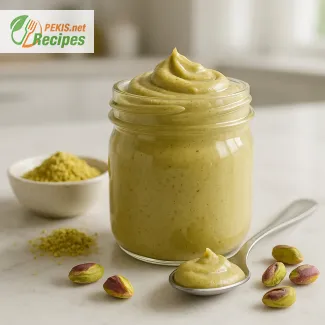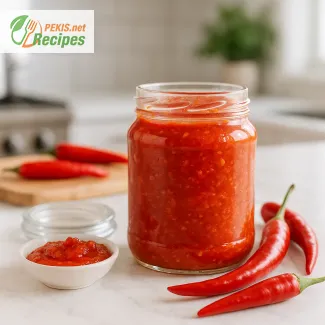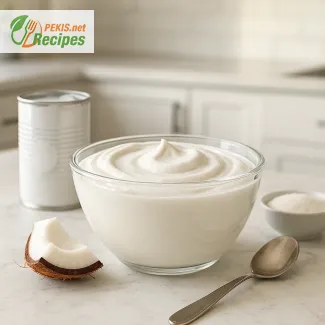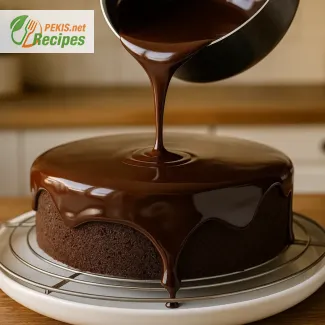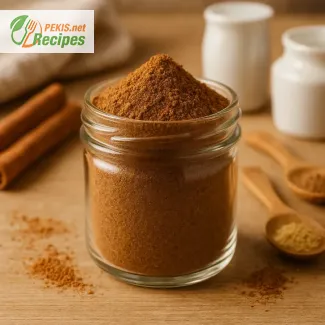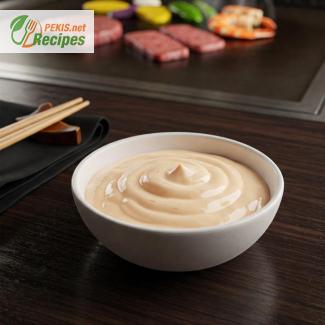
The Secret Behind the Creamy Delight: Unveiling the Hibachi White Sauce
A Japanese-Inspired Sauce That Elevates Every Dish
If you have ever dined at a Japanese steakhouse, you have likely encountered the irresistible Hibachi white sauce. This smooth, creamy, and slightly tangy condiment is a staple in hibachi-style cooking, often drizzled over grilled meats, seafood, and vegetables. With its unique balance of richness, sweetness, and umami flavors, it has gained a cult following, leaving many wondering about its secret ingredients and how to recreate it at home.
Unlike traditional Japanese sauces such as teriyaki or ponzu, Hibachi white sauce—also known as Yum Yum sauce—is an American invention that has become synonymous with teppanyaki-style dining. Its origins can be traced back to Japanese steakhouse restaurants in the United States, where chefs sought to create a mild, creamy condiment to complement the bold, smoky flavors of grilled dishes.
Whether you are a fan of Japanese cuisine, a home cook looking to impress guests, or simply a food enthusiast eager to recreate your favorite restaurant experience, this Hibachi white sauce will transform your dishes into something extraordinary.
What Makes Hibachi White Sauce So Irresistible?
At first glance, this creamy, pale pink sauce may seem simple, but its complex flavor profile is what makes it so special. The sauce delivers a harmonious blend of flavors, balancing the richness of mayonnaise, the tanginess of vinegar, and the subtle sweetness of sugar.
Here are some key characteristics that make Hibachi white sauce a must-have condiment:
A Perfect Balance of Creaminess and Tang
The base of the sauce consists of mayonnaise, which gives it a silky texture and rich mouthfeel. The addition of rice vinegar or apple cider vinegar provides a subtle acidic contrast, cutting through the creaminess for a well-rounded taste.
A Touch of Sweetness and Depth
A hint of sugar or honey adds a gentle sweetness, complementing the tangy and creamy elements. Some variations also include tomato paste or ketchup, giving the sauce a slightly rosy hue and a deeper, more complex flavor.
A Subtle Smoky and Spicy Kick
While not traditionally spicy, many recipes incorporate paprika, garlic powder, or even a touch of cayenne pepper to introduce a mild heat and a smoky undertone. These ingredients enhance the sauce’s versatility, allowing it to pair beautifully with grilled meats, seafood, and fried rice.
The Versatility of Hibachi White Sauce
One of the greatest aspects of Hibachi white sauce is its versatility. It can be used in countless ways, enhancing various dishes with its richness and depth of flavor.
A Staple in Japanese Steakhouse Cuisine
In traditional hibachi dining, this sauce is often served alongside grilled steak, shrimp, chicken, and vegetables. It acts as a dipping sauce or is drizzled over the dish for an extra layer of indulgence.
A Game-Changer for Rice and Noodles
Many people love mixing Hibachi white sauce into their fried rice or stir-fried noodles, adding a creamy and flavorful twist. Its slightly sweet and tangy profile complements the savory umami flavors of soy sauce-based dishes.
A Delicious Dip for Seafood and Fries
This sauce pairs exceptionally well with fried seafood, such as tempura shrimp, crispy calamari, or even French fries. Its creamy consistency and hint of acidity make it a fantastic alternative to tartar sauce.
A Unique Salad Dressing or Burger Spread
For those looking to experiment with flavors, Hibachi white sauce can be used as a salad dressing, offering a rich and slightly sweet element to fresh greens. It also works as a spread for sandwiches and burgers, adding a creamy, umami-packed boost to your favorite bites.
Tips for Making the Best Hibachi White Sauce at Home
Creating this Japanese steakhouse favorite at home is easier than you might think. Here are a few expert tips to ensure that your homemade version tastes just as good—if not better—than what you get at your favorite hibachi restaurant.
Use High-Quality Mayonnaise
Since mayonnaise is the main ingredient, using a rich, creamy variety will enhance the overall texture and taste of the sauce. Japanese mayonnaise, such as Kewpie, offers a slightly sweeter and umami-rich flavor, making it an excellent choice.
Let It Rest for the Best Flavor
While you can enjoy the sauce immediately, allowing it to sit in the refrigerator for a few hours (or overnight) will help the flavors meld together, creating a more balanced and flavorful sauce.
Adjust the Consistency to Your Preference
Some people prefer their Hibachi white sauce to be thicker and creamier, while others like a thinner, pourable version. Adjusting the amount of water or milk can help achieve the perfect consistency for your needs.
Experiment with Spice Levels
If you enjoy a bit of heat, consider adding a dash of hot sauce, cayenne pepper, or even a pinch of wasabi powder to give the sauce a bold kick.
Your Hibachi Experience
Recreating the Hibachi white sauce at home allows you to enjoy the iconic flavors of a Japanese steakhouse whenever you want. Whether you’re using it as a dip, drizzle, or dressing, this creamy, tangy, and slightly sweet sauce is guaranteed to enhance your dishes and leave everyone asking for more.
From grilled meats to fried rice and seafood, the possibilities are endless. Once you try making it at home, you’ll understand why this sauce has become a favorite among hibachi lovers worldwide.
- Combine Ingredients: In a medium-sized bowl, whisk together the mayonnaise, water, melted butter, tomato paste, granulated sugar, garlic powder, paprika, and cayenne pepper (if using) until the mixture is smooth and well-blended.
- Adjust Seasoning: Taste the sauce and adjust the sweetness or spiciness according to your preference by adding more sugar or cayenne pepper as needed.
- Refrigerate: Transfer the sauce into an airtight container and refrigerate for at least 8 hours or overnight. This resting period allows the flavors to meld and develop, resulting in a more authentic taste.
- Serve: Stir the sauce before serving. It pairs excellently with grilled meats, seafood, vegetables, and fried rice.
Elevating the Classic Hibachi White Sauce: Tips for a Richer and More Flavorful Experience
Small Adjustments That Make a Big Difference
Hibachi White Sauce is beloved for its creamy texture and delicate balance of flavors, but there are several ways to refine and enhance this Japanese steakhouse favorite. From small ingredient swaps to bold flavor additions, modifying the traditional recipe can improve depth, balance sweetness, or create a healthier alternative.
By tweaking certain elements, you can adapt the sauce to suit different tastes, dietary needs, and culinary preferences. Whether you want a bolder umami experience, a lighter version with reduced fat, or a spicier kick, simple modifications can transform this already delicious sauce into something even more remarkable.
Enhancing the Flavor Profile with Ingredient Adjustments
The classic Hibachi White Sauce is known for its mild and slightly tangy taste, but experimenting with different ingredients can add complexity and depth. Here are a few ways to modify the sauce while keeping its authentic essence intact.
Using Japanese Mayonnaise for a Richer Taste
Switching from regular mayonnaise to Japanese-style mayonnaise (such as Kewpie) significantly alters the texture and taste. Japanese mayonnaise is made with egg yolks instead of whole eggs, giving it a creamier and slightly tangier flavor. It also includes a touch of umami from ingredients like rice vinegar, which complements the other components of the sauce beautifully.
Effect on Flavor:
- Richer and silkier consistency
- More umami depth due to added vinegar and egg yolks
- Balanced tanginess without overpowering sweetness
Substituting Rice Vinegar for a More Authentic Japanese Touch
Many variations of this sauce use apple cider vinegar or white vinegar, but replacing them with rice vinegar creates a smoother, more authentic taste. Rice vinegar has a milder acidity, allowing the sauce to retain its creamy balance without becoming too sharp.
Effect on Flavor:
- Less acidic and more refined taste
- Subtle sweetness that enhances umami flavors
Adding Soy Sauce for a Deeper Umami Boost
While Hibachi White Sauce typically lacks soy sauce, adding a small amount (about 1 teaspoon) deepens the savory elements without making the sauce too salty. This enhances the umami factor and makes the sauce pair even better with grilled meats and fried rice.
Effect on Flavor:
- Stronger umami presence
- A touch of saltiness to balance the sweetness
- More depth, making it taste closer to traditional Japanese condiments
Infusing Garlic and Onion Powder for Extra Aroma
If you love bold and aromatic flavors, increasing the amount of garlic powder or adding a pinch of onion powder enhances the sauce’s overall taste. Freshly grated garlic instead of garlic powder also intensifies the savory notes, making the sauce more complex and restaurant-quality.
Effect on Flavor:
- Stronger, more pronounced umami
- Enhanced aroma that complements grilled dishes
Avoiding Common Mistakes for the Best Results
Even though Hibachi White Sauce is simple to make, small missteps can affect the texture and taste. Here are the most common mistakes to avoid when preparing this sauce.
Not Allowing the Sauce to Rest
One of the biggest mistakes people make is using the sauce immediately after mixing. This doesn’t allow the flavors to blend properly, resulting in a flat taste. For the best experience, refrigerate the sauce for at least 8 hours—ideally overnight—so that the flavors meld together and create the signature restaurant-quality taste.
Using Low-Quality Mayonnaise
Since mayonnaise is the main ingredient, using a low-quality version can result in a watery or overly oily sauce. Stick to high-fat, rich mayonnaise for a smooth and creamy texture.
Adding Too Much Sugar
While a touch of sweetness balances the sauce, overdoing it can make it cloying and overpowering. Always start with small amounts and gradually adjust to taste.
Healthier Alternatives for a Lighter Version
For those looking for a lower-calorie or health-conscious version, modifying the ingredients can make the sauce healthier without sacrificing taste.
Replacing Mayonnaise with Greek Yogurt
One of the easiest ways to reduce fat while maintaining creaminess is by replacing some or all of the mayonnaise with Greek yogurt. Greek yogurt adds a slight tang, which works well with the other ingredients while providing more protein and fewer calories.
Health Benefits:
- Lower in calories and fat
- Higher in protein, making it more nutritious
- Maintains a creamy consistency with a slight tang
Using Olive Oil Instead of Butter
Melted butter contributes to the sauce’s richness, but replacing it with a small amount of extra virgin olive oil creates a healthier fat profile while keeping a smooth texture.
Health Benefits:
- Contains heart-healthy monounsaturated fats
- Adds a subtle fruity note to the sauce
Reducing Sodium for a Heart-Friendly Version
Since mayonnaise already contains some sodium, be mindful when adding extra salt or soy sauce. Using low-sodium soy sauce or reducing added salt can make the sauce more heart-friendly.
Why Homemade Hibachi White Sauce is the Best Option
While some store-bought versions of this sauce exist, they often contain preservatives, artificial flavors, and excessive sugar or sodium. Making the sauce at home allows for better control over ingredients, ensuring a fresher and healthier product.
Fresh Ingredients, Better Taste
Homemade Hibachi White Sauce is made with fresh, high-quality ingredients, resulting in a better, more vibrant flavor.
Customizable to Personal Preference
By making it yourself, you can adjust sweetness, acidity, and spiciness to perfectly match your taste preferences.
Free from Unnecessary Additives
Many commercial sauces contain stabilizers, artificial thickeners, and preservatives, which can diminish the natural taste. Homemade versions skip unnecessary ingredients, keeping the sauce wholesome and natural.
Hibachi White Sauce is a versatile and flavorful condiment that can be customized in various ways to suit different flavor profiles and dietary needs. Whether you want to enhance its umami depth, reduce its calories, or avoid common preparation mistakes, small adjustments can make a huge difference in the final result.
Making this sauce at home ensures better taste, fresher ingredients, and a healthier version compared to store-bought alternatives. By following these tips, you can create an exceptional homemade Hibachi White Sauce that perfectly complements grilled meats, vegetables, and Japanese-style fried rice.
This recipe contains eggs (from mayonnaise) and soy (if the mayonnaise includes soybean oil). Individuals with egg or soy allergies should exercise caution. To make the sauce egg-free, consider using a vegan mayonnaise made from aquafaba or other egg substitutes. For a soy-free version, ensure the mayonnaise is made with alternative oils such as olive or sunflower oil.
While Hibachi White Sauce is primarily a condiment and consumed in small quantities, it does provide minor amounts of certain vitamins and minerals:
- Vitamin K: Approximately 5 µg per tablespoon, contributing to blood clotting and bone health.
- Vitamin E: Around 0.5 mg per tablespoon, acting as an antioxidant and supporting immune function.
- Choline: Roughly 2.7 mg per tablespoon, essential for liver function and brain development.
These values are estimates and can vary based on the specific brands and types of ingredients used.
The inclusion of paprika and tomato paste introduces antioxidants such as beta-carotene and lycopene into the sauce. Beta-carotene, a precursor to vitamin A, supports vision and immune health, while lycopene has been associated with heart health benefits. However, given the small serving size of the sauce, the contribution of these antioxidants to the overall diet is minimal.
For more information on the nutritional benefits of soy-based products, refer to Healthline's article on soybeans.
